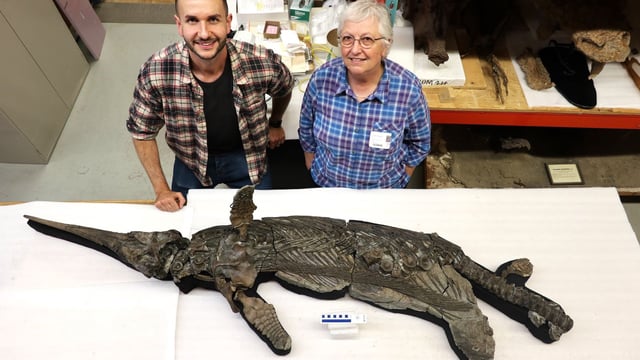Overview
- Researchers formally describe a near-complete ichthyosaur in Papers in Palaeontology, dating it to the Early Jurassic Pliensbachian about 186–184 million years ago.
- The specimen features exceptional three-dimensional preservation of the skull with extensive postcranial remains, making it among the most complete reptiles known from this interval.
- Distinctive anatomy includes a long, sword-like snout, large eyes, and a unique lacrimal bone with prong-like structures that diagnose the new taxon.
- Pathologies show malformed limb bones and teeth consistent with chronic injury or disease, and a clear skull bite wound indicates a fatal attack by a larger predator, with any specific predator identification remaining unconfirmed.
- Found near Golden Cap in 2001 by collector Chris Moore and acquired by the Royal Ontario Museum, the fossil is slated for public display at the museum.


